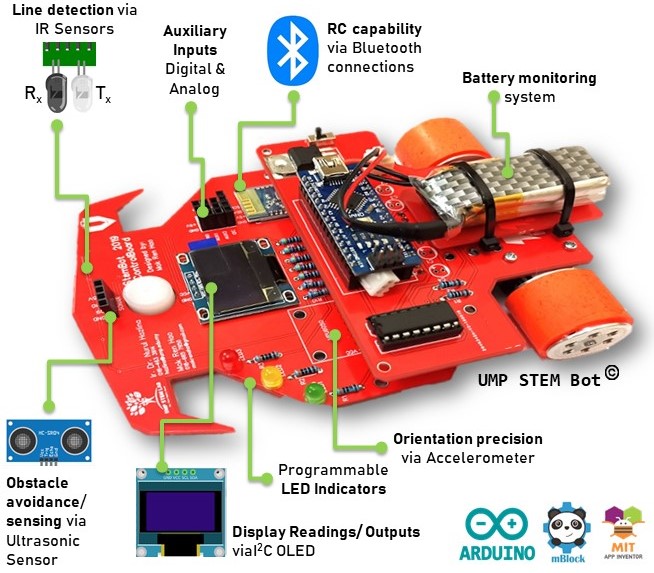
The Arduino Robotics Programming course is crafted out to introduce students to the two basic concepts in physical computing – electronics systems and programming.
In general, physical computing involves the interaction of electronics and electro-mechanical components with the environment, from data sensing, data processing, mechanization system that react to the input system, to advanced automated systems.
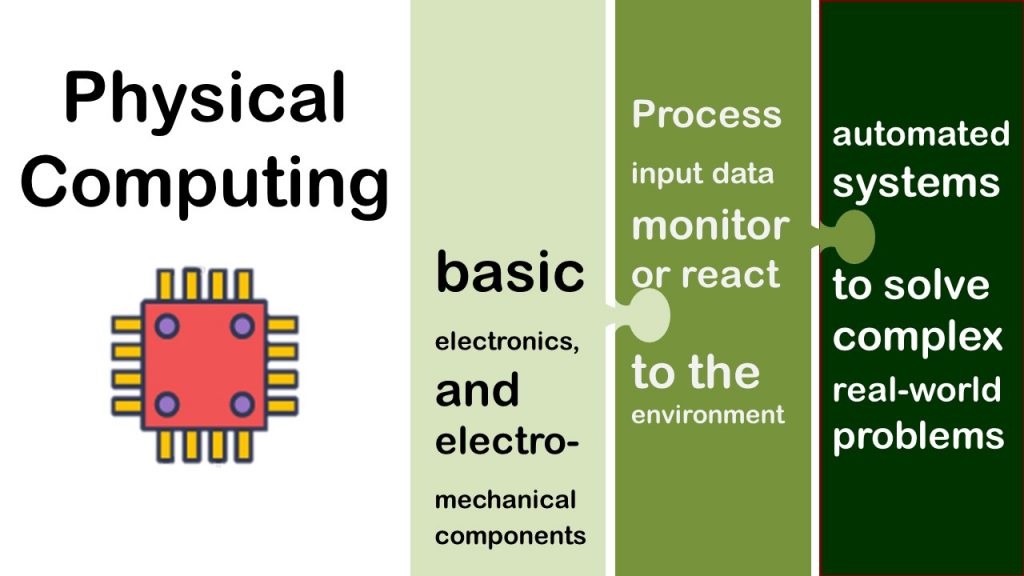
The learning outcomes targeted from the Arduino Robotics Programming course include the ability to code microcontrollers to interact with sensors, the ability to utilize functions in Arduino Programming, and the ability to program UMP STEM Bot, a two-wheel robot, to solve line following and obstacle avoidance challenges.
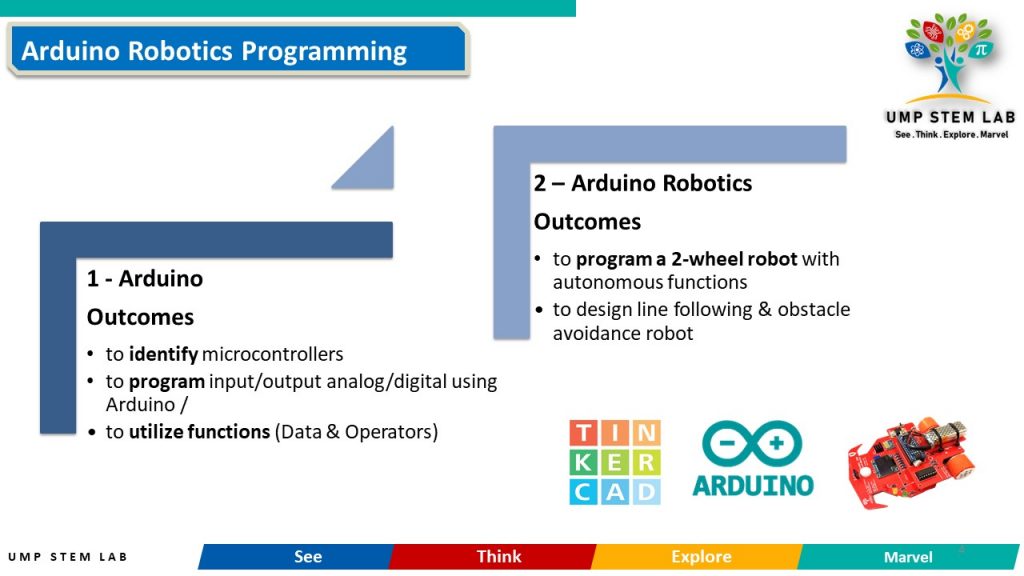
The activities in the class are tailored to the fundamental concepts of programming, which are sequential, conditional, and iterative statements.
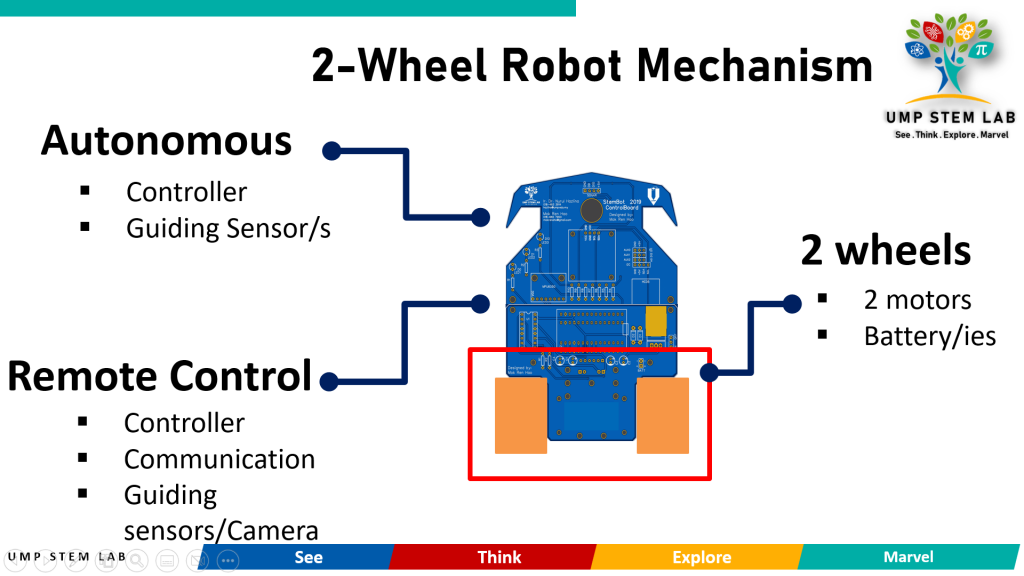
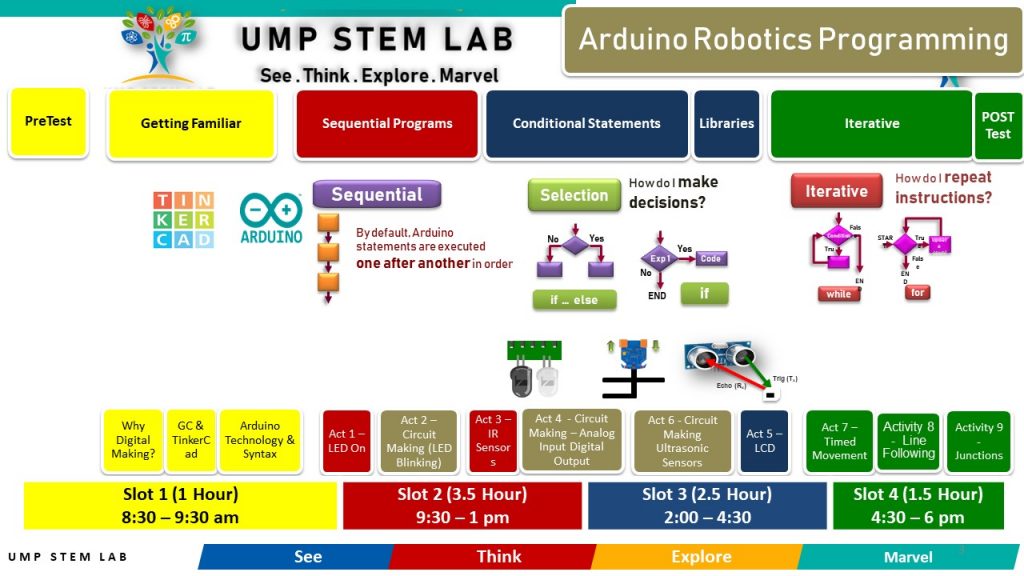
Also covered are the basic of electronic components which are LEDs, photovoltaic resistors (complementing the IR sensors on the STEM Bot), Ultrasonic sensors and LCD Display.
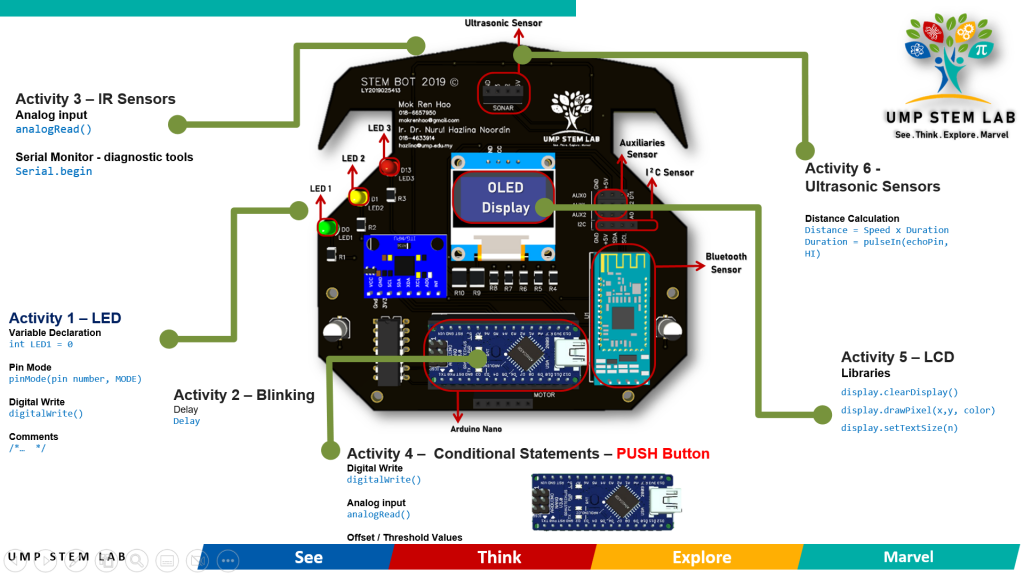
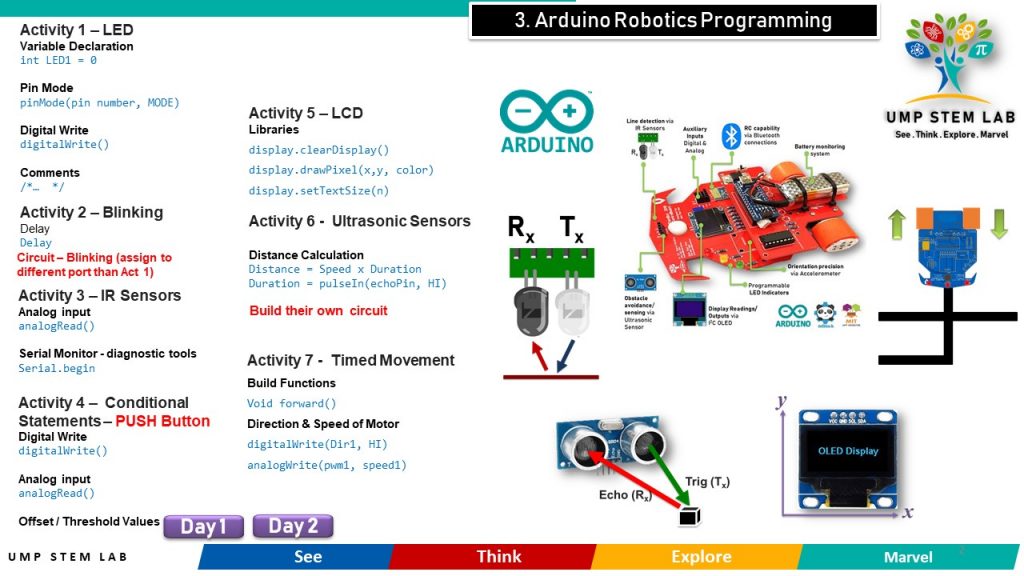
This course make use of the UMP STEM Bot, an open-source Arduino Nano based development kit that offers everything young makers and programmers need. The microcontroller can be programmed using open-source platforms which are the Arduino programming, the graphical programming mBlock as well as the MIT App Inventor.
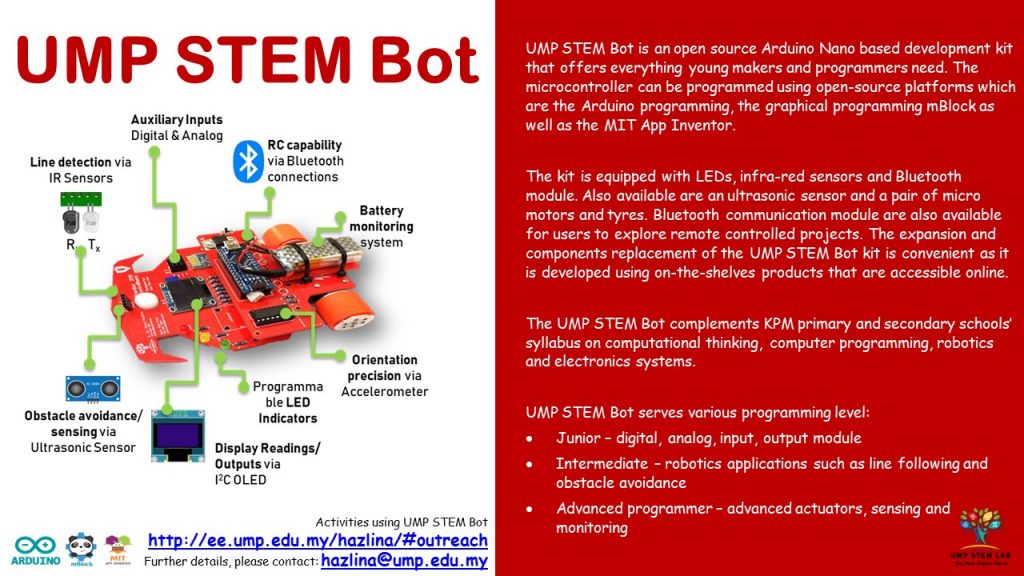
The kit is equipped with LEDs, infra-red sensors and Bluetooth module. Also available are an ultrasonic sensor and a pair of micro motors and tyres. Bluetooth communication module are also available for users to explore remote controlled projects. The expansion and components replacement of the UMP STEM Bot kit is convenient as it is developed using on-the-shelves products that are accessible online.
The UMP STEM Bot complements KPM primary and secondary schools’ syllabus on computational thinking, computer programming, robotics and electronics systems.
UMP STEM Bot serves various programming level:
-
- Junior – digital, analog, input, output module
- Intermediate – robotics applications such as line following and obstacle avoidance
- Advanced programmer – advanced actuators, sensing and monitoring